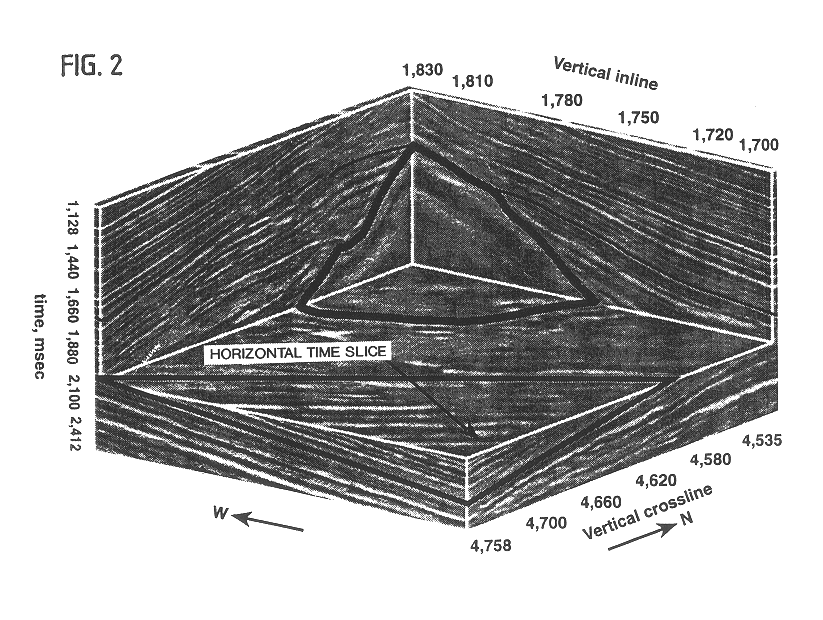Method and apparatus for seismic signal processing and exploration
a seismic signal and processing method technology, applied in the field of seismic exploration, can solve the problems of complex software, large computer resources and complex processing, and difficult to detect changes in stratigraphy on traditional seismic displays, and achieve the effect of quick visualization
- Summary
- Abstract
- Description
- Claims
- Application Information
AI Technical Summary
Benefits of technology
Problems solved by technology
Method used
Image
Examples
examples
FIGS. 11A through 11C are displays of the 3D seismic attributes (.phi., c, d) corresponding to FIGS. 10A through 10C using the semblance based coherency algorithm expressed by equation (6), and the color display technique depicted in FIGS. 8 and 9. The input data were temporarily sampled at 4 ms, have an in-line trace spacing of .DELTA.x=12.5 m, and have a cross-line trace spacing of .DELTA.y=25 m, with the in-line acquisition oriented along a N-S axis. For FIGS. 11A through 11C, a circular analysis window or cell of a=b=60 m was used (See FIG. 4A), so as to include a total of 11 traces in the calculation. The maximum search dip (See FIG. 7C) was d.sub.max =0.25 ms / m, giving rise to 61 search angles. The temporal integration time used was w=16 ms, or K=4, thereby averaging the semblance calculation over 9 samples.
In FIGS. 10A and 10B lines AA' and BB' were chosen as S to N and W to E vertical slices through the center of a salt dome. Line CC" is an offset S to N line and illustrates...
PUM
 Login to View More
Login to View More Abstract
Description
Claims
Application Information
 Login to View More
Login to View More - R&D
- Intellectual Property
- Life Sciences
- Materials
- Tech Scout
- Unparalleled Data Quality
- Higher Quality Content
- 60% Fewer Hallucinations
Browse by: Latest US Patents, China's latest patents, Technical Efficacy Thesaurus, Application Domain, Technology Topic, Popular Technical Reports.
© 2025 PatSnap. All rights reserved.Legal|Privacy policy|Modern Slavery Act Transparency Statement|Sitemap|About US| Contact US: help@patsnap.com



